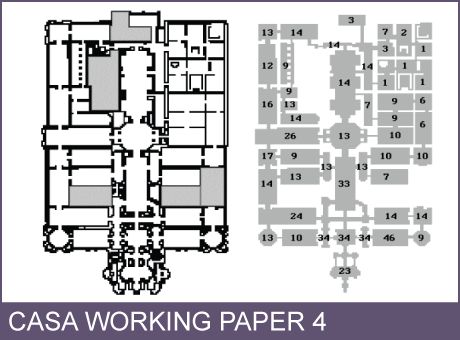CASA Working Paper 4

1 June 1998
Local Movement: Agent-Based Models of Pedestrian Flows
Modelling movement within the built environment has hitherto been focused on rather coarse spatial scales where the emphasis has been upon simulating flows of traffic between origins and destinations. Models of pedestrian movement have been sporadic, based largely on finding statistical relationships between volumes and the accessibility of streets, with no sustained efforts at improving such theories. The development of object-orientated computing and agent-based models which have followed in this wake, promise to change this picture radically.
It is now possible to develop models simulating the geometric motion of individual agents in small-scale environments using theories of traffic flow to underpin their logic. In this paper, we outline such a model which we adapt to simulate flows of pedestrians between fixed points of entry - gateways - into complex environments such as city centres, and points of attraction based on the location of retail and leisure facilities which represent the focus of such movements.
The model simulates the movement of each individual in terms of five components; these are based on motion in the direction of the most attractive locations, forward movement, the avoidance of local geometric obstacles, thresholds which constrain congestion, and movement which is influenced by those already moving towards various locations. The model has elements which enable walkers to self-organise as well as learn from their geometric experiences so far. We first outline the structure of the model, present a computable form, and illustrate how it can be programmed as a variant of cellular automata. We illustrate it using three examples: its application to an idealised mall where we show how two key components - local navigation of obstacles and movement towards points of global locational attraction - can be parameterised, an application to the more complex town centre of Wolverhampton (in the UK West Midlands) where the paths of individual walkers are used to explore the veracity of the model, and finally it application to the Tate Gallery complex in central London where the focus is on calibrating the model by letting individual agents learn from their experience of walking within the environment.
This working paper is available as a PDF. The file size is 1.09MB.
Authors: Michael Batty, Mark Thurstain-Goodwin, Bin Jiang
Publication Date: 1/6/1998
 Close
Close

